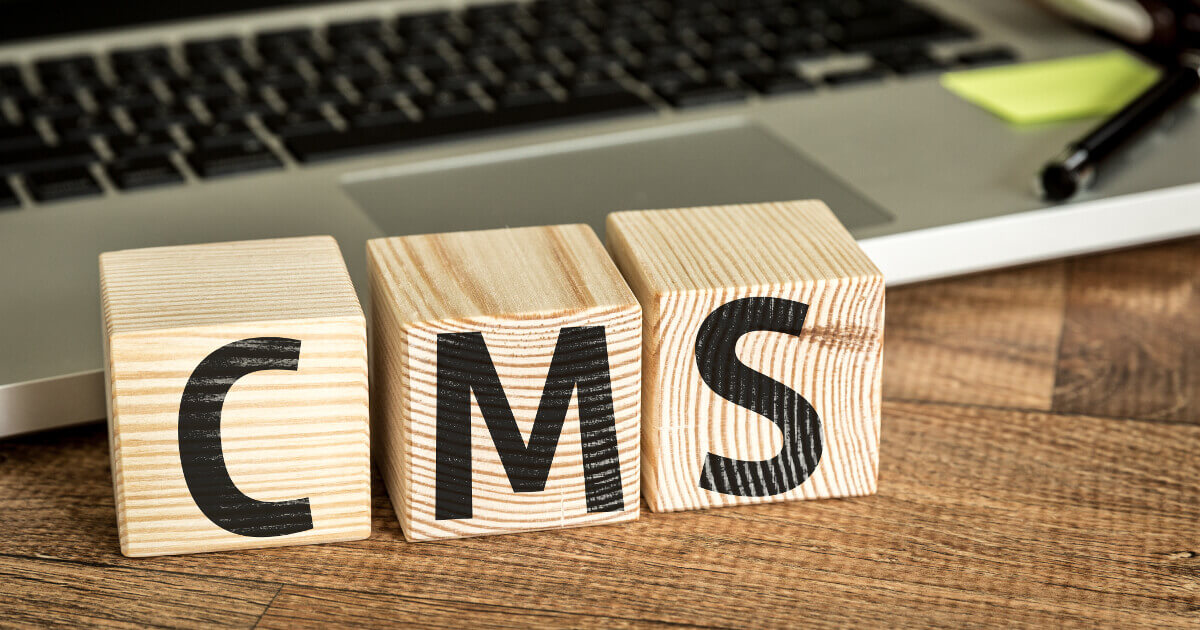CMS vs. Shop Software - What is the difference?
When e-commerce began, classic shop systems were primarily designed for the stringent sale of commercial goods or services, often presented as a basic list of product features coupled with a few images of the product in question. This style of presentation can still be found today in e-commerce, but at the same time, modern shop systems have a lot more to offer in terms of design and functionality. As customer needs increase and become more specific, so too does the feature list required to sell a product: 3D product images improve the presentation, while comfort functions, like a wish list and helpful tips, simplify the shopping experience even more.
At the same time, it’s been proven that high-quality content, e.g. good product texts or editorial entries in blog or magazine formats, don’t just offer potential customers added value – they also lead to further product sales, provided they’re accompanied by the proper search engine optimization measures.
Parallels between the systems
In the past, website owners who wanted to combine content of this kind had no option but to run a content management system (CMS) parallel to a shop. This is still a sensible option today, because CMSs are specialized for users who want to create, edit, and manage content on a large scale, whether it’s text-based, multimedia, or a combination of the two. Many CMSs also feature a graphic user interface, meaning that beginners with no prior programming experience or HTML knowledge can create and publish content. Alongside content creation, content management systems also offer useful tools for regulating access rights for authors and users. Shop systems, on the other hand, focus on the development of complex, legally compliant product management and customer management services. They’re also used to create ordering and purchasing processes, checkouts, and various payment methods.
Why use a CMS and a shop together?
The advantages of 24/7 sales and a greater reach are very enticing for shop owners, making internet retail a highly attractive proposition. But it’s critical to choose the right infrastructure for your needs. It’s more important than ever to offer the best possible customer experience if you want to win new customers and keep existing ones for the long run. A shop system offers a lot of options for this on its own of course, but if used in combination with a CMS, you can offer customers added value that will convince them to shop with you again.
Higher value, interactive content helps sales
If you want to set yourself apart from the competition so that customers notice what you have to offer, then it’s no longer enough to simply offer a shopping platform in a shop window format. In the marketing world, service-oriented interaction with customers plays an increasingly important role. By offering high value and relevant content, you can give customers another reason to return to your site – and presenting this content is where a modern CMS comes into its own.
To excite and interest customers, content should be informative, useful, or entertaining, and clearly relate to your brand. If you combine this with good search engine optimization (SEO), then this means your content and your products can be found easily when users type-in the right keywords. To keep customers for the long run, you’ll need to make sure that your product offerings and quality meet expectations.
Example: the ‘shoppable content’ model
Magazine articles with helpful or entertaining content encourage your potential customers to stay on your site and read more. If the product features in the articles is also on sale on the website (shoppable) and integrated into the article, the odds are greatly increased that it’ll be taken seriously and purchased. By integrating your products, you don’t even need to encourage site visitors to take a detour to a separate shop system.
By integrating a purchase function in relevant content, you’re shortening the customer journey. The user discovers the product by reading content, rather than searching for it and clicking through the shop page. Another advantage is that the content can be used to help highlight the added value of products, perhaps with the use of images or multimedia features, to demonstrate the benefits of the product in question. The shorter and more natural the customer journey, the less chance there is of losing them on the way.
Symbiosis rather than coexistence?
CMSs and shop systems are traditionally aimed at different website requirements. But, as we’ve demonstrated already, they complement each other very well. At the end of the day, content marketing only serves its purpose if the content is used to market corresponding products or services.
Integrating both systems together has been technically possible for a long while, but it is a fair bit of effort. No wonder then, that recent trends have seen both content management systems and e-commerce solutions extending their own functionality to limit this need, instead of developing separately side by side. This has led to both CMSs and online shop systems being bracketed together under the term ‘content commerce’.
Different scenarios for CMSs and e-commerce solutions
The following scenarios describe five possible forms of integration for online shop systems and content management systems:
1.) An e-commerce solution already fulfills all the user requirements in terms of content management, and so no specialized CMS is needed.
2.) An online shop system is supported by a CMS via an interface.
3.) A CMS is supported by an e-commerce solution via an interface.
4.) The online shop system and the CMS are operated separately, with each system running on its own domain.
5.) A PIM (product information management system) or stock control system is used to serve as a leading third system between an online shop and a CMS.
Scenario 1 and scenario 5
The first scenario listed here describes the ideal situation in content commerce. The last option is particularly suited for companies with a very complex flow of goods and services, and can also help to structure processes like stocks and purchases. All the other approaches have more defined advantages and disadvantages.
Scenario 2 and scenario 3
These two situations appear to be basically the same at first, but they differ in their leadership roles: either the CMS forms the basis for the system or the e-commerce program takes primary control. Whichever element is left then acts as the secondary system, supporting the main system by extending its functionality. The disadvantage here is that the integration can be a lot of effort. If you’re already running one of the systems in operation, it can be worthwhile to integrate the missing one into the existing one, instead of creating two completely new systems.
The big advantage of scenarios 2 and 3 are that website visitors can access the shop and all the content together under the same domain. The shop and content also share a common navigation and design, as determined by the leading system. This helps to create unity within the brand. And if you plan on a rebrand, or decide to make any adjustments to the design, only one system needs to be maintained – saving you time and money.
Scenario 4
The advantage of running your shop and your CMS separately in parallel operation is lower development costs, because the expensive and difficult task of linking the two systems is no longer a factor. If one of the systems malfunctions or goes down temporarily, the other will continue to work as normal, because the two function independently of one another.
But the big disadvantage of this option is that the two systems separately must be separately maintained for the long term. This can create problems with search engines too: if both systems perform differently, the ‘wrong’ system may end up being listed more highly in Google’s rankings, meaning that the searcher makes a detour first – lengthening the customer journey and potentially causing frustration.
Finding the right e-commerce platform for you
Finding the perfect system for your online shop isn’t easy: every individual project brings with it its own, often complex, demands and requirements. The first step should always be to conduct a comprehensive analysis of the starting conditions and technical requirements, as well as defining the mid-term and long-term goals, in terms of turnover, costs, competition, number of products, scalability, and unique selling point (USP).
It’s worthwhile to create a concrete conceptual business plan, as this will make your analysis much easier. Once your analysis is complete, you’ll find the list of possible e-commerce solutions is smaller and clearer. You should now carefully compare the features of the various possible systems available that suit your needs, to find one that you can really get the best out of.
To ensure that your online store profits from good content marketing, you either need a system that already offers suitable content management features, or a specialized CMS that’s well suited to the needs of your shop. As a general rule, the more complex a system becomes, the more important it is to balance effort and performance.
Finding the right CMS
Just as with e-commerce platforms, a CMS also requires a basic compatibility and corresponding interface to connect with an online shop system. It’s also important to be able to synchronize files between the shop and the CMS at all times. Before choosing a content management system, you’ll have to carry out basic usage analysis to determine the type of system that suits your needs.
CMS or shop software: which one suits my needs?
If the bottom line for your website is to generate interest, improve your image, or increase brand awareness through good, high-quality publications, then a content management system is theoretically enough for you. But if you’re aiming to sell concrete products or services, you’ll want to combine a shop system and a CMS. And since we’re closing in on the age of content commerce, the question is starting to change from ‘Which shop system is best to combine with my CMS?’ to ‘Which system combines the CMS and shop functions that I need?’ – as unified systems increase.








